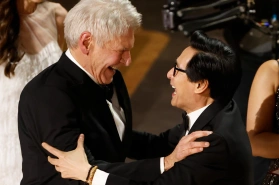
Rio Bravo, a 2023 Warner Bros restoration partnered by TCM
With very intense developments on the business side of the media production world through the strikes by, first, the Writers’ Guild, and then the Screen Actors Guild, here is another story that has garnered attention to those interested in the legacy, history, and cultural value of motion pictures: the precarious situation of Turner Classic Movies. In recent months, there have been significant layoffs at TCM and signs that the channel may be in jeopardy. This editorial from Maureen Dowd in June highlights the importance and mission of TCM, while this recent update from Entertainment Weekly addresses the question: What’s going on at TCM?
In the article, they describe how some are fighting to protect the network, and it features a quote that ties in closely with a great deal of work in the field of media literacy: “TCM has taken an approach to classic movies in a way that we try to make them relevant to a new audience. We’re trying to present the films in a way that treats the audience as smart and intelligent. We take very sober and reverential responsibility for these films, no matter what they are. We know that by showing these films, somewhere on a television set, somebody is watching them. That’s what TCM is doing in the long run — we are helping to maintain the cultural memory of the greatest art form of the 20th century.”
Stay tuned, and in the meantime, keep teaching and learning, be informed, and continue making new discoveries across the world of moving images.



 In our work related to media literacy, we constantly examine questions related to authenticity, truth, origin, authorship, and other factors of media messages. Artificially generated images, sounds, text, and other media creations that continue to emerge in the communicative landscapes of digital media will continue to present moving targets for media literacy. The magazine Wired offers the page
In our work related to media literacy, we constantly examine questions related to authenticity, truth, origin, authorship, and other factors of media messages. Artificially generated images, sounds, text, and other media creations that continue to emerge in the communicative landscapes of digital media will continue to present moving targets for media literacy. The magazine Wired offers the page 
